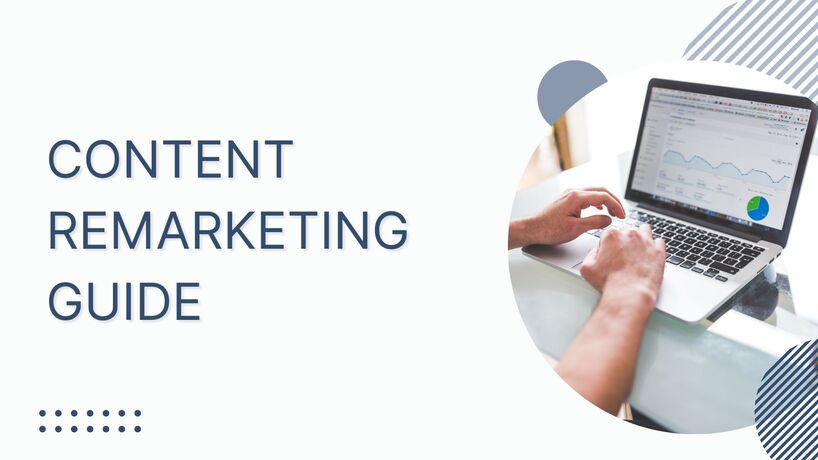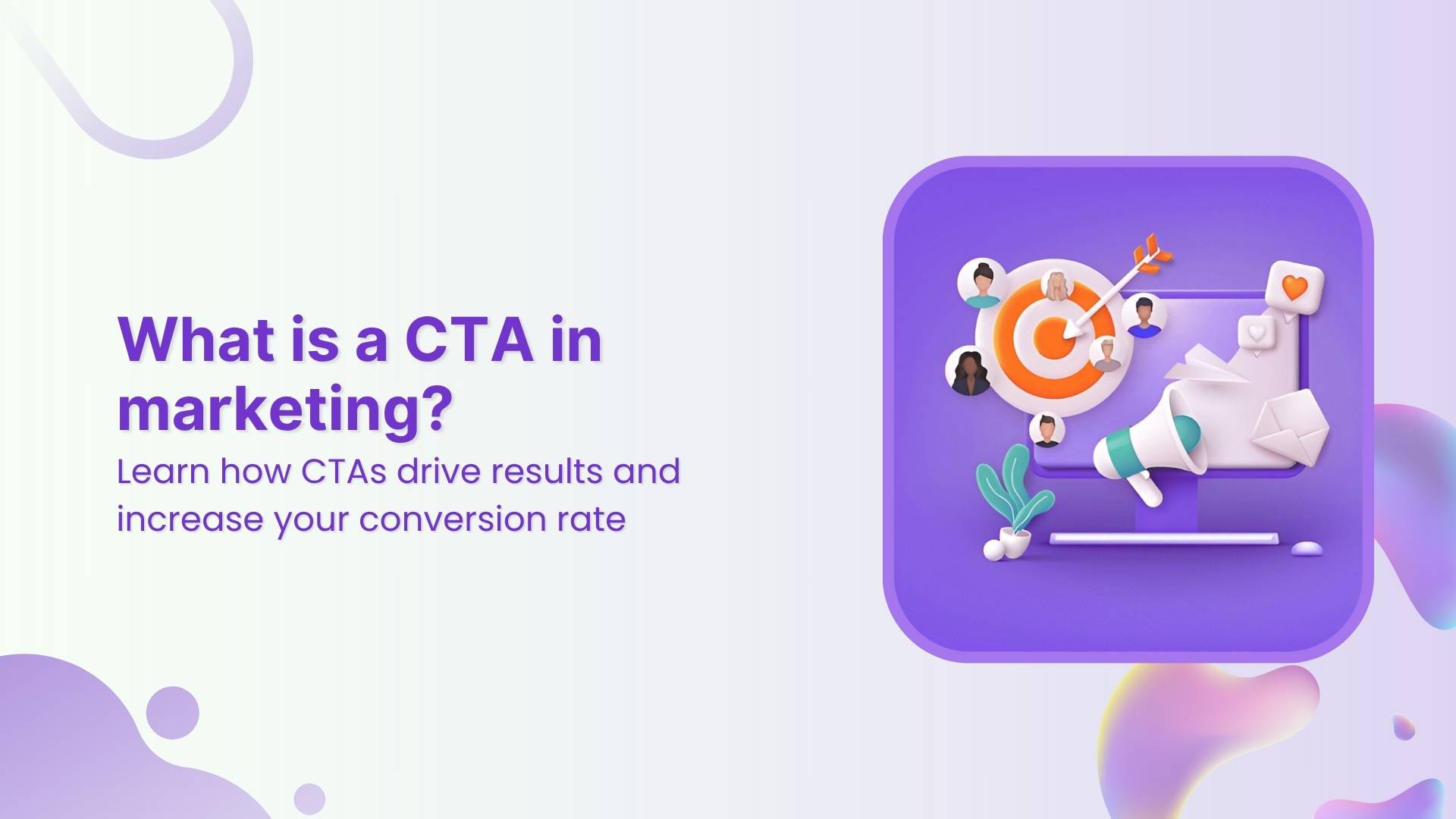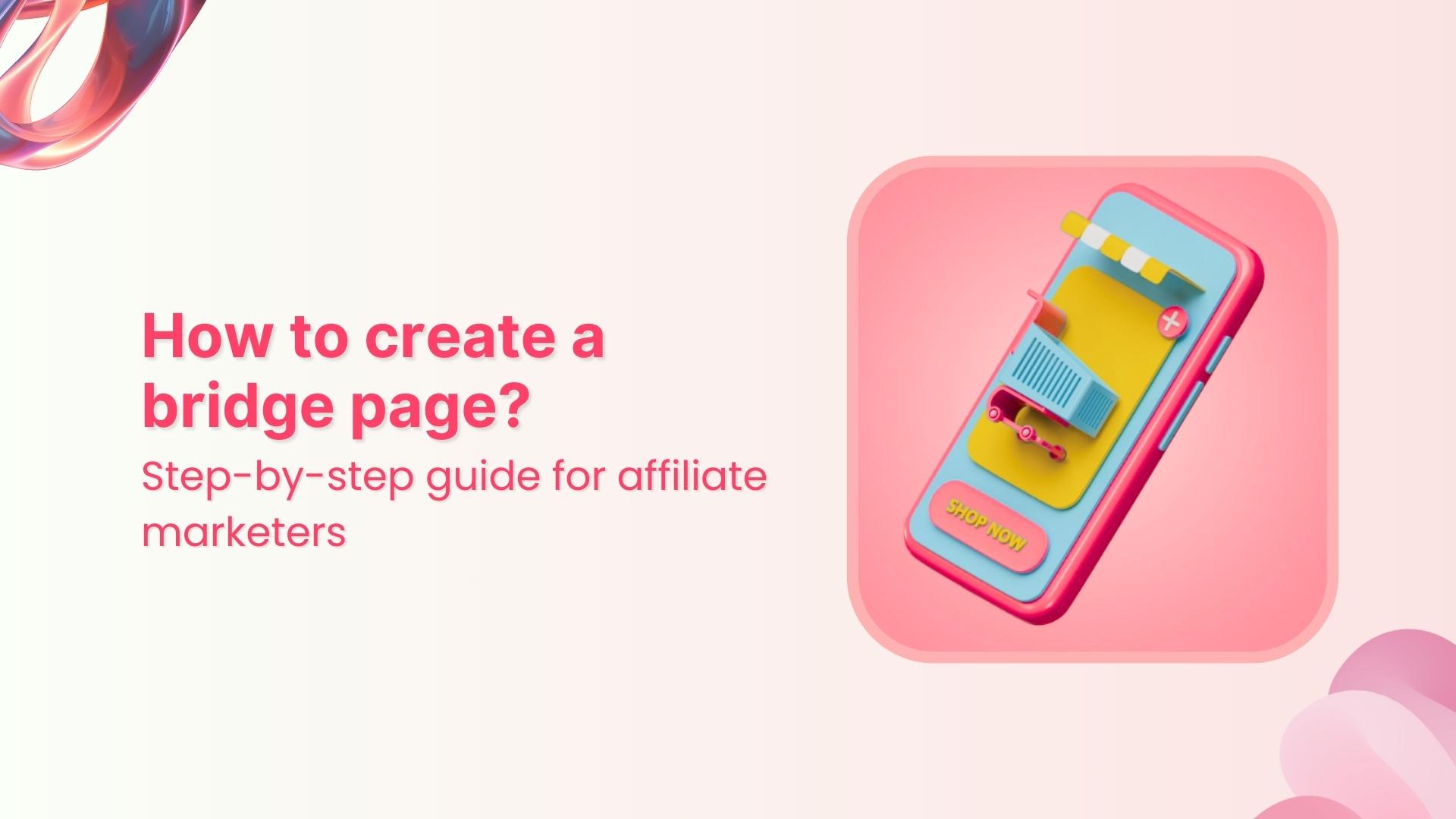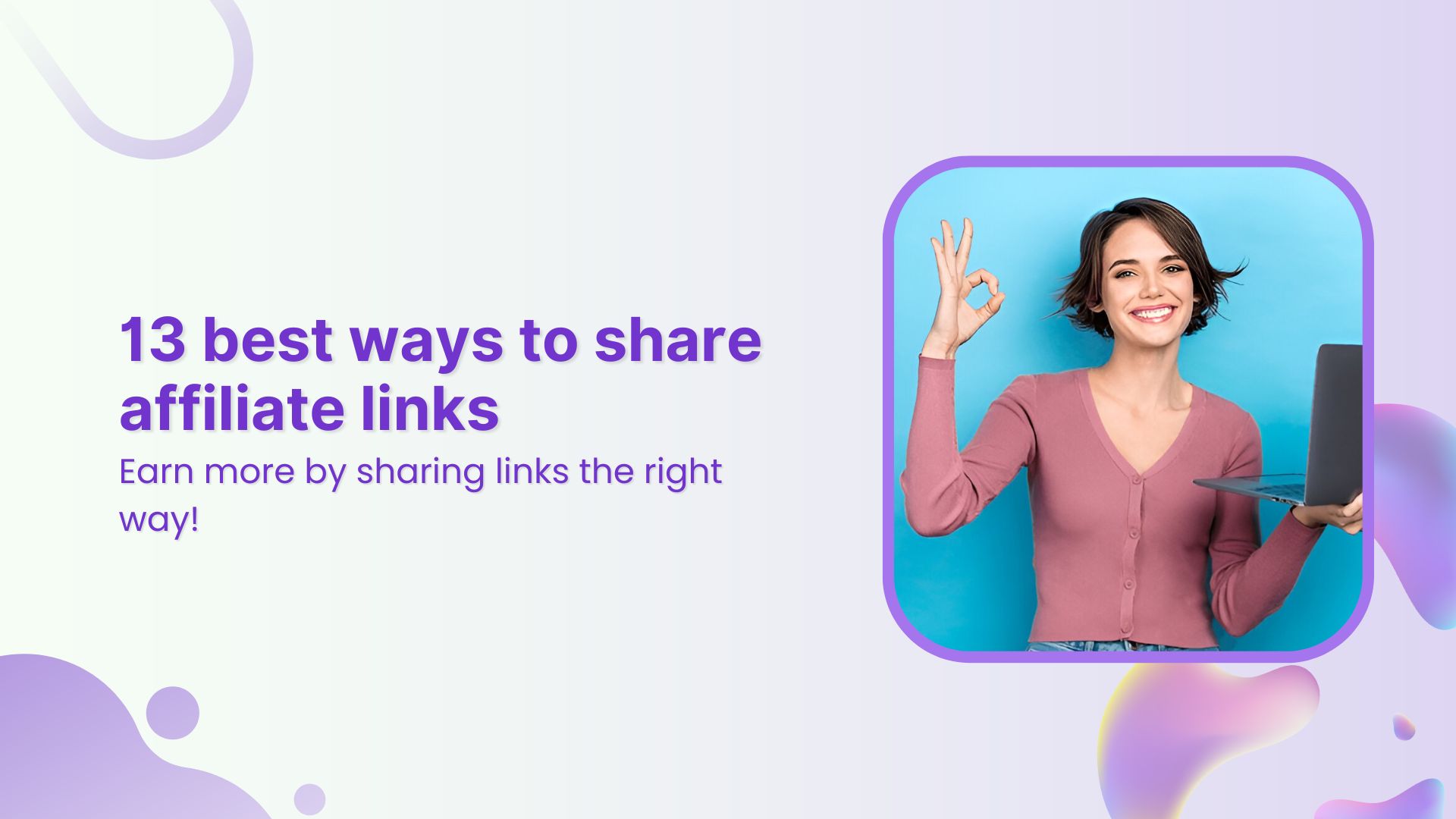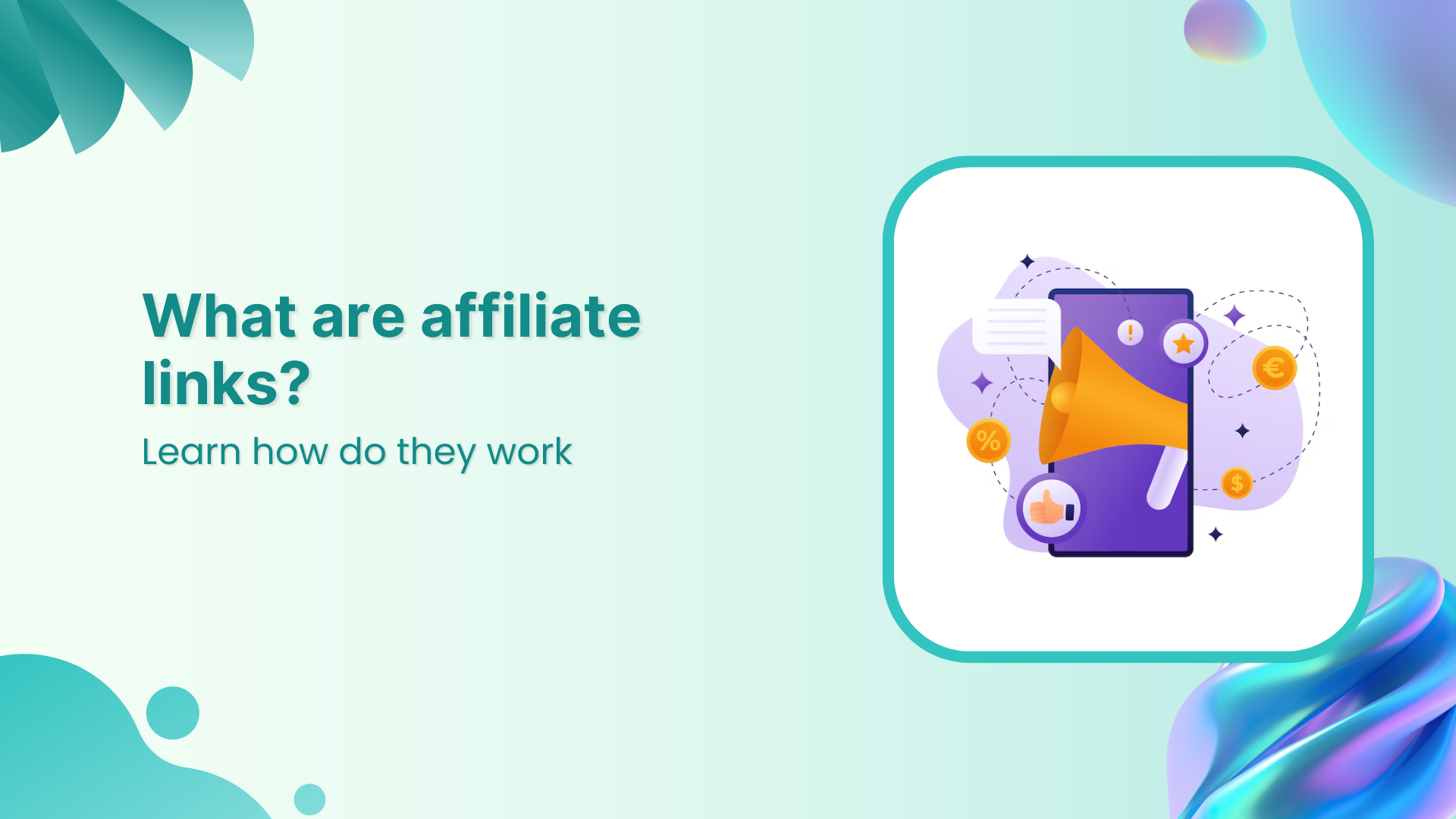It is funny how very few people know about content remarketing. Some confuse it with usual content marketing, but it is actually a separate technique that has its own aims and practices involved.
Don’t worry, you are on the right foot steps as this walk-through and guide is what you need to begin with content remarketing.
What is content remarketing?
Content remarketing is a strategy of targeting to bring back and re-engaging with people who have already visited your website or have been past customers of your brand.
What is the goal of remarketing?
With this strategy, marketers strive to capture the attention of your site’s visitors to make them come back to your website and complete an action they didn’t make during their first visit. This can be anything from purchasing your product to subscribing to your newsletter. Content remarketing is like that second chance you needed desperately.
What are the benefits of remarketing?
Remarketing helps you to:
- Increase brand recall and branded searches.
- Turn abandoners and bouncers into leads.
- Improve the repeat visitor rate and engagement.
- Improve SEO
What’s the difference between remarketing and retargeting?
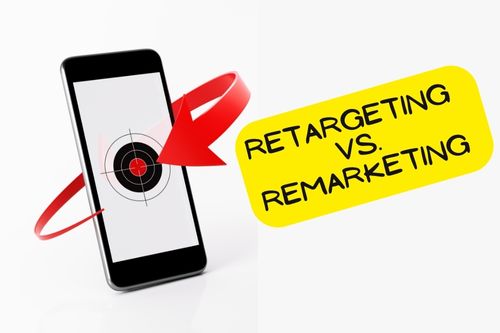
The two terms can confuse many as they are very interrelated.
In general, the goals of both are focused on targeting and converting potential clients that have bounced from your socials or website.
But what really makes remarketing different from retargeting?
In the beginning, remarketing was thought off as sending just email campaigns to re-engage with customers to inform about discounts, trial expiry or to follow up potential clients, whereas retargeting involved paid advertising.
However, with the evolution of internet and social media both have evolved though the goal is still the same.
Retargeting still involves paid advertising to target and convert potential clients. While, remarketing involves reaching out or following up to past customers or potential clients through various channels that may be Instagram, Facebook, Email, SMS or Whatsapp etc.
Generally, the key medium of remarketing strategy is still email. Both strategies can be used in conjunction, where emails are sent with a paid advertisement.
Further in-depth study of the both terms makes one thing clear that they are not the same.
According to Neil Patel, a famous digital marketing expert,
So it’s safe to say that retargeting ads and remarketing emails are actually two sides of the same coin. However, retargeting is more of a subset of remarketing which only targets website traffic, while remarketing is more concerned with getting back to past visitors using personalized content mostly confined to emails. The image below will develop a better understanding of the subject.
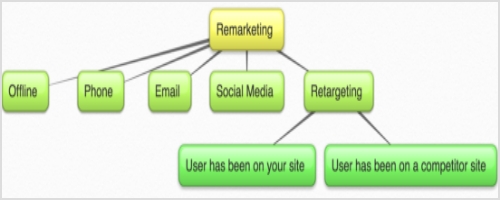
Now that the difference between the two is clear. Let’s move on further.
What are the different types of remarketing?
Remarketing is categorized into 5 types. The five types are
- Standard Remarketing
- Email Remarketing
- Dynamic Remarketing
- Video Remarketing
- Remarketing Lists for Search Ads
When to use remarketing?
- Use remarketing strategy for
- Up-selling products and services
- Cross selling
- Special offers
- Re-engagement campaigns
- Customer support campaigns
- Inventory update campaigns
- Follow ups such as cart abandonment or trial expiry etc.
The right tools and channels for content remarketing
You can create personalized content using these different channels that can be used for remarketing are
Facebook ads
It’s an analytics tool by Facebook containing a pixel code that can be put on your website. A pixel is a small box that is placed on a webpage. When someone visits the page, the pixel is able to collect information about the visitor. This information can then be used by other websites to target that person with ads. In remarketing, an advertiser places a pixel on their website. When a user visits the site, the pixel is able to track everything from their web browser’s cookie to their IP address. This data is then used to track people who have visited other websites or viewed certain content. The advertiser can then use this information to show them relevant ads across multiple websites. For example, if a user has visited Amazon and viewed an item for sale, an ad for the same product could be shown on Facebook which would drive more purchases for the advertiser.
Related: Getting Started with Meta Pixel: The Key to Successful Retargeting
Google ads
The Google Display Network is a web-based advertising network run by Google. The network allows advertisers to place text, image, video and Native ad units on websites and mobile apps.
One of the best things about using GDN for remarketing is that it gives you a lot of reaches. You will be able to find your tagged site visitors on the network several times per day across many different sites. In general, you will be able to connect with the people you tagged several times per month.
The first step in remarketing is to create an audience of users that you will be remarketing too. This can include people who visited specific pages on your website or read your blog, but you will have to group
them into separate audiences depending on your goals.
By grouping your tagged site visitors into audiences, you will be able to reach out to only certain people and persuade them to come back to you.
Another benefit of grouping your audience is that you can bid more aggressively. Consequently, this will lead to more impressions and higher ad positions. Some pages on your website such as the pricing or product pages are way more valuable than your blog. By selecting those who visited specifically your product and pricing pages, you can write follow up mails to them.
In order to define your audience, create a new remarketing list on GDN and define which website visitors you want to include and which you want to exclude. Don’t worry about cookies and such, because Google will take care of them itself.
Yet another great idea is to group your blog audience by the posts they read. So, for example, if you have articles on three different topics, create three remarketing lists for each of these topics’ visitors.
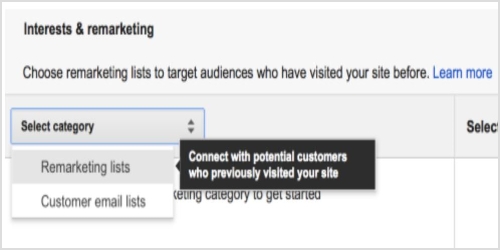
Once you have your remarketing lists set up, you must decide on your audience membership duration. In remarketing, this refers to the number of days you follow a user around. This means that setting your audience membership duration to 30 days will make your site visitors see your ads for, you guessed it, 30 days.
The problem with deciding on the “right” audience member duration is that there is such a fatigue which results in overly aggressive remarketing. Many experts believe that being too “creepy” with your ads may result in the loss of ROI of your campaigns or can even damage your brand. This is why so many marketers advocate for shortening audience membership duration, even though the reality seems to be different.
Fortunately, remarketing has shown to be way more effective. In fact, they stay effective even after ad fatigue starts setting in and viewers are more likely to engage with remarketing campaigns.
This brings us to the fact that being bold with your remarketing is the way to go. Set your audience membership duration for longer time (something like three times your average sale cycle length). Having more impressions means a higher conversion rate and can help you fight ad fatigue.
Related:Google Retargeting: The Ultimate Guide for 2022
Email lists
Prior to Google ads and Facebook ads, emails were the original form of remarketing. With email remarketing, you can take advantage of existing customers who’ve visited your website and email them with targeted offers. By targeting specific segments of customers who have shown interest in your product or service, you can increase the likelihood of success with your campaign.
For example, you might use an email remarketing list to send out emails to past customers with discounts on flights or hotel stays.
Another way to use email remarketing is to show ads to people who have already looked at your website. This allows you to broaden the pool of potential customers, while also reducing the cost of running an ad. While email remarketing can be a powerful tool for reaching out-of-the-people, it does require some preparation and maintenance.
First, you’ll need to create a custom audience that’s carefully selected so that you don’t run into any false positives. Next, make sure that your campaign doesn’t overreach by carefully monitoring performance and experimenting with different tactics until you find the one that works best for you.
Look at the example of Tarte Cosmetics remarketing email.

The “Ends Soon” call to action button creates a sense of urgency and persuades the customer to click and reach directly to the meaningful content.
Email remarketing is the practice of sending out an email to people who have previously expressed interest in your product or service. It’s a great way to reach out to customers who were previously interested in your brand, but may no longer be actively using it. Remarketing allows you to keep them in the loop and possibly re-engage with them. There are two types of remarketing lists:
1. Remarketing lists for customers who’ve already completed a purchase. These are referred to as Customer Lists.
2. Remarketing lists for people who have shown interest in your company in some way, but have never purchased from you (yet). These are referred to as Leads Lists. Remarketing is a very effective way to keep in touch with existing customers and generate new ones.
Related: How to Create an Email Marketing Strategy to Grow Your Business
Replug
In addition to GDN and Facebook, you can also use Replug (a platform for link shortening, tracking, optimization, and deep analytics) which is quite valuable for content remarketing. You can use other platforms as well to send personalized messages and ads to your past visitors on the respected platforms.
Using Replug, you can create a retargeting pixel campaign and add relevant tags to track for any short URL. Here’s a preview of it.
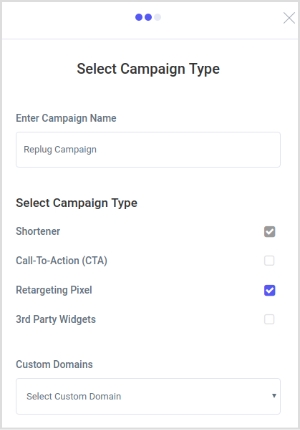
Related:Retargeting Pixel Setup
Content remarketing best practices
Here are the best practices in content remarketing for you to use:
Ads that push to “hard” offers: The best way to get your ads working is to promote your best offers. If you have a bestselling product, make an ad for it, because this will make it sell even better and will help you get your other products selling too.
Conversion path analysis: Do a conversion path analysis and figure out which pages the user usually visits before converting. Once you know what these pages are, target them with your ads.
Ads that push to content: Your content may be even more important to visitors than your products. This means that it may be better to target an article in your ad rather than promote a product page.
Social shares on your blog content: Analyze your blog content and see which content gets the most shares to social media. This will give you a general idea of what kind of content people are interested in and you will be able to target your ads at those articles on your blog.
Email segmentation: Segmenting emails lists depending on specific actions taken by the customer when making the purchase. Depending on the actions, you can send more information and a personalized email using CRM with email marketing software to target specific segments.
Reengage with inactive subscribers: There are a lot of people that subscribe to emails but remain inactive, reengaging with such potential customers by reminding them at the first place that why they subscribed the email. Adding an CTA within the email can encourage them to complete the journey.
Below is an example of American Giant who sent an remarketing email to its subscriber by including the product they browsed previously.
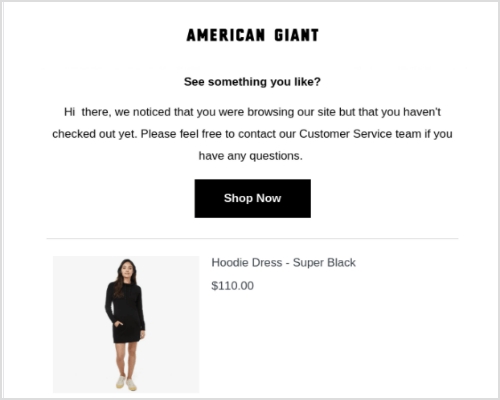
20 tips for remarketing
Lastly, to give you more ideas about how to retarget your ads and remarket your content, here are twenty examples from the past:
1. The right link
One of the biggest mistakes you can possibly do is sending your customers to the wrong place. Imagine you posted a picture of one product, but linked to another one. The person who clicks on the link wants to see the product in the picture, but once they see something different, they quickly lose interest. Instead of doing this, act like Kelley Blue Book on Twitter – link the corresponding product that is in the image you attach to the post.
2. Customer buying window
A common misconception in remarketing is that you have to retarget potential buyers with ads for the product they haven’t bought. In reality, there are many customers who can’t afford certain products and have simply browsed through your catalogue before and viewed these very products. As Rob Weatherhead, the owner of Agent Wolf, says, you must retarget these individuals only for a certain amount of time while their interest is still present. If they don’t convert during this time, it means they either decided not to purchase your product or bought something similar elsewhere.
3. Separate landing pages
This is a mistake done not only by those who practice remarketing but also by many experienced marketers. Instead of linking their ads to separate landing pages, they simply link them to the homepage which is a big turnoff for many consumers. Neil Andrew, Marketing Manager at PPC Protect Limited, recommends creating separate landing pages for your ads and always linking to them.
4. Cheap alternatives
Philippe Côté-Léger, Marketing Director at Lab Urbain, believes that using Facebook and Google is not mandatory. You can follow suit and make use of cheaper alternatives that can prove to be just as effective as Google and Facebook. For example, a content discovery network like Outbrain offers inexpensive CPC.
5. Dynamic remarketing ads
This is one of the simplest yet overlooked tips. Using dynamic remarketing tips is essential for getting the best results.
For example, Ryan Scollon says that dynamic remarketing ads allow him to show ads with products that customers have viewed before. This makes the ads way more interesting instead of leaving them generic. The only thing to keep in mind when designing dynamic remarketing ads is that your imagery must be on point to capture the attention of your target audience.
6. Email promotion
Learning Success Systems has been implementing this technique into their strategy for quite a while now. They match their retargeting campaign with email promotion making it twice as effective. There is no logical explanation for why this works so well, but it has been proven to be successful for many businesses. Perhaps, people remember their emails once they see the ads.
7. Reviews
Karen Sahetya, the founder of Brand Central Marketing, says that one of the best ways to build social proof is to use reviews for retargeting and remarketing. Those who viewed your products but didn’t make a purchase are more likely to buy once they see that others have had a positive experience with your brand and with some particular products of yours. It is the equivalent of someone considering buying a car in real life and a friend telling that person about their positive experience with this model.
8. Social proof
This is very similar to the previous example, but it is still quite different. Let’s look into this practice with the help of Birchbox. They have successfully integrated social proof into their retargeting ads. You can either send those who click on the ads to reviews of your products or include quotes from your past customers about your brand into the ads themselves among other things.
9. Audience segmenting
Audience segmenting is crucial for your digital remarketing campaign. Separating your targeted audience into those who have converted and those who haven’t will allow you to show corresponding ads to different individuals. This practice has been proven effective by many businesses that used it and Evoke Strategy LLC in particular. Its co-founder Devon Vocke says that audience segmenting has always helped them make their campaigns more effective.
10. Best offer
Displaying your best offer is essential for attracting the most attention. One of the best examples of this is Handy’s home cleaning retargeting banner that appears after a customer views other similar websites with home cleaning services. Making such ads catchy is also very important. They have to have bright colors, a promotional offer, and a call to action that stands out and speaks to the audience.
11. Prioritizing users
Joe Castro from Elevation says that prioritizing users that are close to completing a purchase is crucial for achieving more conversions. Those who added products to the cart or went as far as to get to the billing stage are more likely to purchase something than those who simply visited your homepage or product pages. Be ready to invest more in targeting the former ones and offer them free shipping or something similar to get them to convert.
12. Potential clients over sales
Instead of focusing on making a sale, nurture potential clients. Take WordStream, for example. The company offered a free assessment instead of a discount for their products. Consequently, many customers let their guard down because they weren’t pressured into purchasing. WordStream offered a service of value related to what their customers wanted based on what their remarketing “sensors” detected. Always think of customers first and sales second.
13. Urgency
Many marketers know of this simple characteristic that always works. Creating a sense of urgency will motivate your customers to complete the action you want them to faster. For example, Expedia uses urgency in their retargeting ads to prompt users to book travel from their site. Expedia uses irresistible deals with a last-minute offer and this works like a miracle. This is credited to the fear of missing out that most people experience when they see such ads.
14. Interesting & relatable
It has been said before, but it will never be old: make your ads interesting and relatable. There is also a great example of this technique. Mazda and Merchenta worked together to create ads that would attract more potential customers to test drive their cars. Merchenta built customized ads that were based on geographic radius matching individuals to the nearest Mazda dealership. The ads displayed the nearest dealership houses that had the specific Mazda car models that customers viewed online. This, in turn, raised the chances of these people visiting the saloon and test driving the car.
15. Frequency cap
Using a frequency cap can prevent overexposure. As Kyna Garrett from Strike Social points out, social media ads are everywhere, so applying a frequency cap can prevent potential customers from being overwhelmed by your ads. In fact, overexposure can be very damaging to your brand, so it is important to determine the right frequency (which is also not that easy). Find the perfect balance by testing different frequencies and then use the one that works best.
16. Avoid spammy ads
Patric Kreidler from Power Digital Marketing talks about something very closely related to the previous example. Such ads as pop-ups, countdown ads, ads with sound on autoplay, and so on are seen as spam by many users and usually ignored. Moreover, they often lead to viewers associating them with a bad experience. Obviously, no brand would want that, so avoid using such ads at all costs.
17. Emotional connection
It has long been proven that ads that create an emotional connection in viewers are way more powerful than usual ads. For example, Think Engraved uses cute pictures in a combination with cute statements to draw a smile or make the viewer laugh. This draws in potential customers and hooks them onto what else the brand can offer. You can also add an extra something to such ads to make them even more appealing (e.g. a discount or a gift).
18. Videos & slideshows
What can be better than visuals that “speak” to the audience? Images are so common that most ads get lost even if they have a stunning design. This is why videos and slideshows are now becoming so popular. However, you must remember to keep your slideshows with no audio and disable autoplay on your videos. Otherwise, they can become annoying.
19. Relevant sites
Thomas Budnik from Auto Accessories Garage says that including only those sites that are relevant to your brand will ensure that you don’t waste your money for nothing and target only the relevant audiences. Before letting your remarketing campaign go live, check that only the relevant websites are included or the irrelevant ones excluded.
20. Content messaging
Last but not least, Robb Hecht has adopted a social content messaging strategy to help his remarketing efforts. This simply means that you use a special framework that breaks down your ads and serves them to customers at different stages of your sales funnel.
Bonus Tip: Raising your click-through rates will reduce your click prices. This way, you will be paying for a greater volume of clicks, but they will cost you several times less. Just remember to have image ads rather than text-turned-image ads.
Final thoughts on content remarketing
All in all, content remarketing is one of the best techniques to use in your online marketing strategy, and you will definitely get something useful out of it. Make sure to read this article carefully again to refresh your memory about what content remarketing is and how to use it properly.
Guest blog post by Kristin Savage who nourishes, sparks, and empowers using the magic of a word. Along with pursuing her degree in Creative Writing, Kristin was gaining experience in the publishing industry, with expertise in marketing strategy for publishers and authors. She is a regular contributor to Best Essay Education and WOWgrade.



























